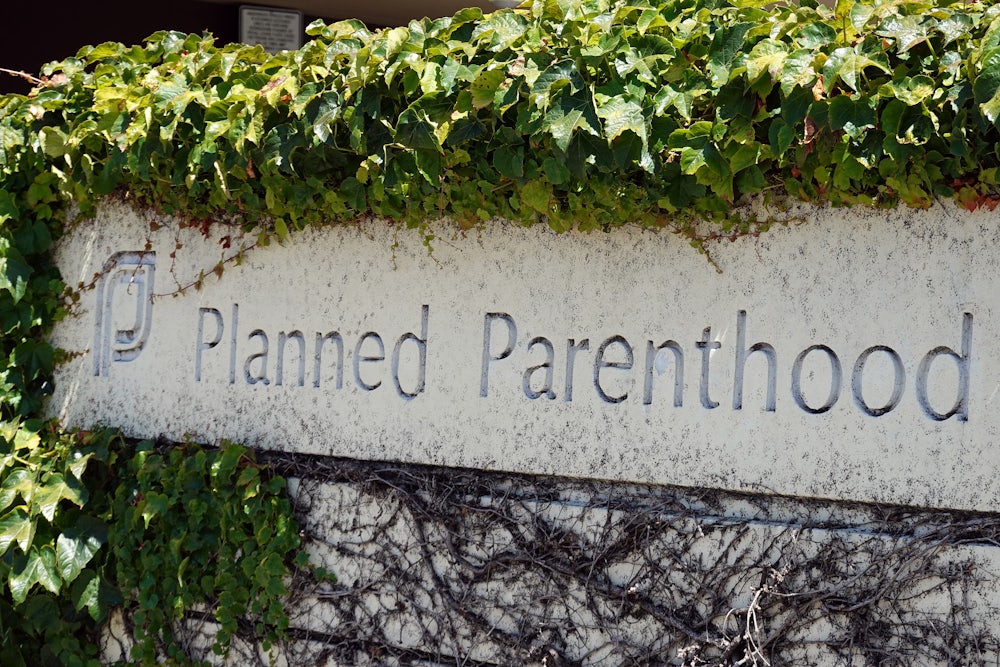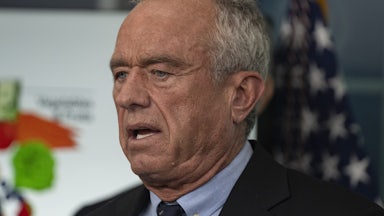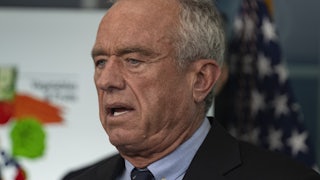Republican administrations and lawmakers have had Planned Parenthood in their sights for decades, but the new Republican spending law achieves their long-sought goal of defunding the reproductive health and abortion care organization. Between dramatic cuts to Medicaid and the targeting of Planned Parenthood, the measure, passed in Congress and signed by President Donald Trump earlier this month, will have devastating implications for low-income Americans’ ability to access reproductive health care of all kinds.
“We’ve seen this kind of provision for years, and they’ve just never been able to pass it, and now they finally have,” said Katie O’Connor, senior director of federal abortion policy at the National Women’s Law Center. “What makes this really unprecedented is just that it comes at the same time that we’re going to see millions of people lose access to Medicaid altogether.”
The law prohibits any reproductive health clinic that performs abortions and receives more than $800,000 in federal reimbursements from receiving Medicaid funding for one year. Although it does not mention Planned Parenthood by name, it effectively defunds the organization, given its high operating budget. Abortion rights advocates say that the law also may serve as a backdoor ban on the procedure even in states where abortion is legal; the law leaves nearly 200 Planned Parenthood clinics at risk of closure, 90 percent of which are in states where abortion is legal.
“It’s going to make it harder for everybody in those states—and everybody coming from other states where abortion has already been banned or severely restricted—to access care,” said Karen Stone, vice president of public policy and government relations at the Planned Parenthood Action Fund.
Planned Parenthood is already prohibited by federal law from using Medicaid funds to provide abortions—with the exceptions of cases of rape, incest, and life endangerment—although 20 states use their own funds to cover abortion for Medicaid particpants. It instead uses those resources to provide other kinds of reproductive health care. According to KFF, Planned Parenthood clinics serve more than two million patients per year; moreover, roughly four in 10 Medicaid recipients reported receiving medical care from a Planned Parenthood facility at some point. Planned Parenthood health centers provide health care unrelated to abortion, including cancer screenings, contraception, and testing for sexually transmitted infections. If they are cut off from federal funding, it becomes more difficult for clinics to see those low-income patients who may be in need of these services because the health centers would not be reimbursed for the care they provide.
The passage of the law has sown “chaos and confusion” for Planned Parenthood health centers across the country, said Stone. This week, a federal judge blocked the total implementation of the provision related to Planned Parenthood, although the injunction only applied to certain clinics. The Trump administration has already appealed this decision, and it will likely wend its way to the Supreme Court, where the conservative majority has been overtly hostile to abortion rights.
The passage of the new law came just one week after the Supreme Court dealt another blow to Planned Parenthood, ruling that individual states could block the organization from receiving Medicaid funds for reproductive health services. The court’s conservative majority argued that, although Medicaid patients have the capacity to choose their own provider under law, they do not have the right to file lawsuits against states that wish to block funding for the group. This particular case was not centered on abortion but rather on access to contraceptive care, which the plaintiff was trying to obtain from a Planned Parenthood clinic; even in states where abortion is severely restricted, Planned Parenthood is associated with abortion by Republican lawmakers.
“What we saw from the Supreme Court, in my mind, was already worsening the deep divide between states that ban abortion, or states that are hostile to abortion rights, and states that protect abortion rights,” said O’Connor. By defunding Planned Parenthood, O’Connor continued, the new Republican law builds upon the decision by the Supreme Court by making abortion more difficult to access across the country—not just in red states.
If clinics are closed in states where abortion is legal, it would also make it more difficult for out-of-state patients traveling to seek an abortion to obtain that procedure. “It would flatten out the differences between states, and also put a lot more pressure and challenge on places that remain open, because they’d be serving even more people as the population of clinics declines,” said Mary Ziegler, a law professor at the University of California, Davis, and an expert on abortion law and history.
Another element of uncertainty lies in timing. Because the provision is written to be in effect for one year, it would need to be extended by Congress for it to continue to be in effect. “There may be various Band-Aids and stopgaps that people can use to cover the difference in the short term, but that would not work or be sustainable in the longer term, so that’s another wild card,” continued Ziegler. For example, while donors could step in to help defray costs and alleviate funding shortfalls to cover immediate needs, those funding streams may not be tenable over the long term; moreover, it would put pressure on abortion and reproductive health care funds intended to assist low-income patients in receiving care that might otherwise be too expensive.
A June report by the Guttmacher Institute, a think tank focused on reproductive rights, found that other federally qualified health centers would not be able to easily replace the care currently provided by Planned Parenthood affiliates. In 2020, Planned Parenthood served roughly one-third of the contraceptive clients that visited family planning centers funded through the social safety net. If Planned Parenthood were to be excluded from Medicaid reimbursement, Guttmacher found that federally qualified health centers would need to increase their capacity to provide contraceptive care by 56 percent.
Moreover, in the longer term, the law’s cuts to Medicaid will exacerbate these challenges when certain provisions are implemented in 2028. The nonpartisan Congressional Budget Office has estimated that the new law will result in 10 million people losing health coverage over the next decade. This in turn would devastate their ability to access reproductive health care and health centers’ capacity to serve them.
“Medicaid, for low-income folks, is critically important to their ability to access contraception, STI testing—all of the whole range of sexual reproductive health care services,” said Amy Friedrich-Karnik, director of federal policy at Guttmacher. “That also then has this ripple effect on abortion [care]. So, as you start cutting off people’s access to certain kinds of health care services and clinics’ ability to serve them, those clinics end up potentially closing.”
In 2023, more than 21 percent of women aged 15 through 49 received health care coverage through Medicaid, and more than half of all women living below the federal poverty level relied on Medicaid coverage. The cuts to Medicaid are also likely to have a significant effect in rural areas, where nearly one in four people rely on that program for health care coverage. Meanwhile, the uncertain future of Planned Parenthood clinics would exacerbate issues with obtaining care: According to Planned Parenthood, 60 percent of health centers at risk of closure are located in medically underserved areas, rural communities, and areas with a shortage of primary health care professionals.
“We’re just going to see this ripple effect of people not having coverage and not necessarily being able to get health care, and at the same time, you put a target on the clinics themselves that are there to serve those populations,” said Friedrich-Karnik. “So it’s just going to be this huge void, and you’re going to be left with millions of people unable to access the health care that they need.”










